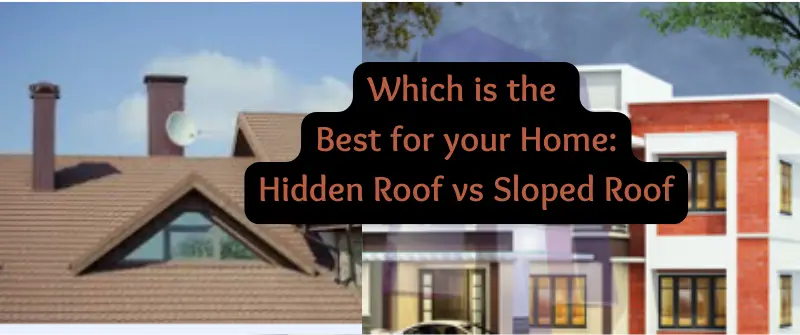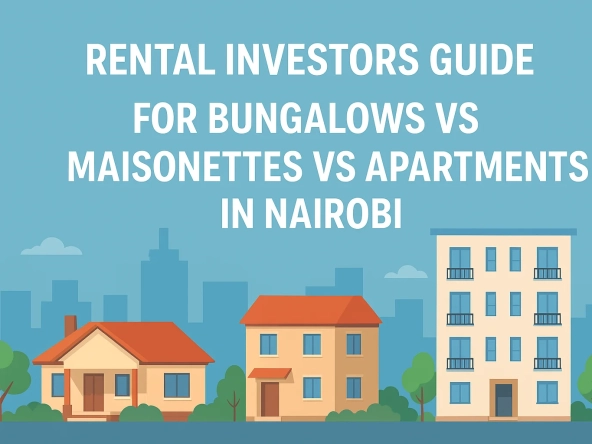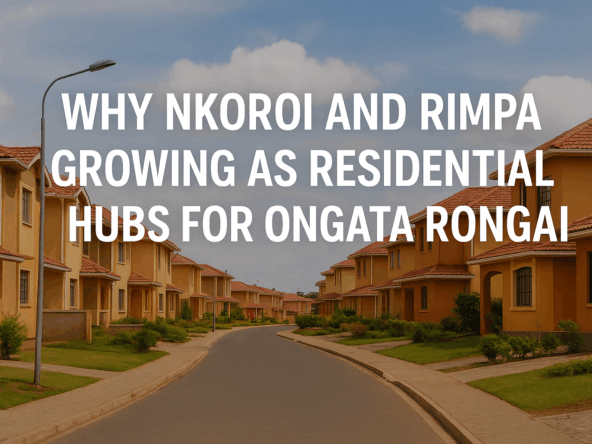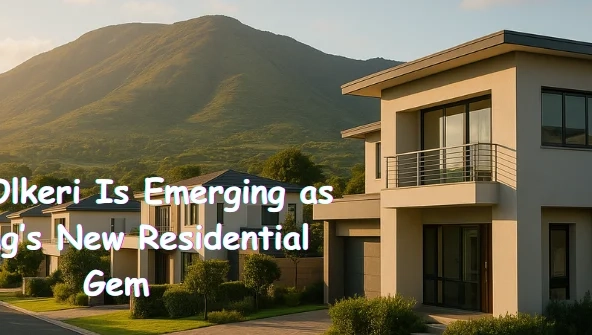Recently, many people have been adopting the hidden roof design of roofing their homes and residential development projects, especially in gated communities in urban areas.
The trend is most common in Ongata Rongai, Ruiru, Ngong, and Kitengela among other suburbs of the Nairobi metropolitan region.
Today, we delve into the trend with a view of understanding how different it is from the traditional sloped roof design that we all know.
Read on as we explore the differences between hidden roofs and normal sloped roofs, the pros and cons of each, and the factors you should consider when deciding which is best for your home.
The Difference between Hidden Roof and Sloped Roof
The main difference between a hidden roof and a normal sloped roof lies in its design and visibility.
A hidden roof, often flat or slightly sloped, is concealed behind parapet walls, creating a sleek and modern appearance that blends with contemporary architecture. It is typically not visible from the ground.
In contrast, a normal sloped roof is visibly angled, allowing for efficient water drainage, and is commonly associated with traditional home designs.
While sloped roofs are better suited for areas with heavy rainfall or snow, hidden roofs offer more rooftop space but require careful attention to drainage and maintenance.
What is a Hidden Roof?
A hidden roof, also known as a concealed or parapet roof, is a type of roofing design where the roof is hidden behind raised walls or parapets, giving the appearance that the home has no roof.

This style is commonly found in contemporary and minimalist architecture, particularly in urban and commercial settings.
A hidden roof is often flat or has a low pitch, but it is designed to be unseen from the ground.
What is a Normal Sloped Roof?
A normal sloped roof, also known as a pitched roof, is the traditional roof design with an angled surface. The slope can vary from shallow to steep, depending on the architectural style and climate needs.
Sloped roofs are common in most residential homes and are often associated with classic, rustic, or traditional designs.
Pros and Cons of Hidden Roofs
Hidden roofs are often chosen for their sleek and modern appearance, but they come with some practical considerations. Here are the main pros and cons of hidden roofs:
Advantages of Hidden Roofs
1. Modern and Minimalist Aesthetic
Hidden roofs are often used in contemporary and minimalist designs because they create clean lines and give the home a sleek, modern appearance.
If you want a sophisticated, uncluttered look, a hidden roof can enhance your home’s architectural elegance.
2. Increased Design Flexibility
The hidden roof allows for creative freedom in the overall architectural design.
Since the roof is concealed, architects can focus on creating bold geometric shapes, flat lines, and sharp angles without worrying about how the roof will affect the visual balance.
3. Better Use of Roof Space
Because hidden roofs are typically flat or slightly sloped, they offer more usable space. You can use the roof area for a rooftop garden, terrace, or even a solar panel installation. This is particularly valuable in urban areas where space is limited.
4. Protection of Roof from External View
Hidden roofs offer protection from external elements like strong winds, which can tear off shingles or tiles from a visible roof.
The raised parapet walls shield the roof from direct exposure to weather conditions, which can extend its lifespan.
Disadvantages of Hidden Roofs
1. Drainage Challenges
One of the biggest challenges with hidden roofs is drainage. Flat or low-pitch roofs don’t allow rainwater or snow to run off as easily as sloped roofs.
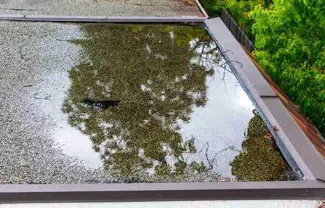
This means a hidden roof requires an efficient drainage system, including proper waterproofing, gutters, and downspouts.
Without adequate drainage, water pooling can lead to leaks and structural damage.
2. Higher Maintenance Requirements
Hidden roofs tend to need more frequent maintenance compared to sloped roofs. The risk of water buildup, debris accumulation, and possible drainage issues means that regular inspections and cleaning are necessary to prevent costly repairs.
3. Potential for Heat Build-Up
Since hidden roofs often lack the natural ventilation of a sloped roof, there is a higher chance of heat build-up within the structure.
This can increase indoor temperatures and reduce energy efficiency unless proper insulation and ventilation are incorporated into the design.
4. Limited Durability in Harsh Climates
One of the biggest, if not the main disadvantage of the hidden roof is that it may not be the best choice for areas with heavy snowfall, frequent rain, or severe storms.
The flat or low-pitched surface can accumulate snow and ice, which adds weight to the roof and increases the risk of structural damage.
Why Sloped Roofs are better than Hidden roofs
When designing or buying a home, one of the most important decisions you’ll face is choosing the right roof style.
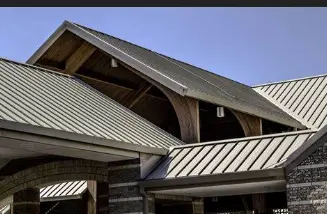
The roof plays a vital role in protecting your home from the elements, influencing energy efficiency, and shaping the overall aesthetic.
Sloped roofs have been the standard for homes for centuries, and they continue to be a popular choice due to their functional benefits and traditional appeal.
However, they also come with their own set of pros and cons. Let us explore them below to discover what dynamics can change your choice.
Benefits of using Sloped Roofs
1. Efficient Water Drainage
The primary advantage of a sloped roof is its ability to efficiently drain water and snow, which makes it resilient to adverse weather.
The angle of the roof allows rainwater to run off naturally, reducing the risk of leaks, water damage, and structural issues. This makes sloped roofs ideal for areas with heavy rainfall or snowfall.
2. Energy Efficiency
Sloped roofs provide better insulation and ventilation, particularly in colder climates. The extra space between the roof and the living area can be used for insulation, which helps regulate indoor temperatures.
The natural slope also allows for the installation of attic vents, which can improve air circulation and reduce heat buildup.
3. Longer Lifespan
In most cases, sloped roofs tend to last longer than flat or hidden roofs, primarily because they are better suited to handle the elements.
With proper materials and maintenance, a sloped roof can last several decades, offering a long-term investment for homeowners.
4. Variety of Roofing Materials
Sloped roofs offer more flexibility in terms of roofing materials. Homeowners can choose from a wide range of materials, including asphalt shingles, clay or concrete tiles, metal, slate, and wood shakes.
This allows for more customization in terms of both functionality and appearance.
5. Traditional and Classic Appeal
Sloped roofs are associated with classic and traditional architectural styles, making them ideal for homeowners who prefer a more conventional look.
Whether you’re building a Colonial, Cape Cod, or Ranch-style home, a sloped roof will complement the design beautifully.
Limitations of the Traditional Sloped Roofs
1. Comparatively Higher Costs

Sloped roofs are generally more expensive to build due to the increased complexity of the design.
The steeper the slope, the more materials and labor are required, which can drive up the overall construction cost.
2. More Difficult to Access for Maintenance
While sloped roofs require less frequent maintenance, they are more challenging to access when repairs or inspections are needed.
Homeowners often need to hire professionals for roof inspections, gutter cleaning, or shingle replacement, which can add to long-term maintenance costs.
3. Limited Usable Space
Unlike hidden roofs, sloped roofs don’t offer much in terms of usable space. While some homes may have an attic for storage, a sloped roof doesn’t provide the same potential for rooftop terraces or gardens as a flat or hidden roof.
4. Vulnerability to Wind Damage
In areas with strong winds or hurricanes, sloped roofs can be more susceptible to wind damage. The angle of the roof can act as a sail, catching the wind and causing shingles or tiles to lift.
However, proper installation and wind-resistant materials can help mitigate this risk.
How to decide whether a Hidden Roof or a Sloped Roof
Choosing between a hidden roof and a sloped roof is a significant decision that depends on several factors. Below are some of the key aspects to consider when making your choice:
Climate
The climate in your region will play a large role in determining which roof type is best for your home. If you live in an area with heavy rain or snow, a sloped roof’s superior drainage capabilities may be a better fit.
Conversely, in warmer, drier climates, a hidden roof may provide a modern aesthetic without the same risk of water damage.
Aesthetic Preferences
If you’re aiming for a sleek, modern, and minimalist look, a hidden roof will likely complement your design goals. For homeowners who prefer a more traditional or rustic appearance, a sloped roof is the better option.
Budget
Your budget will be a significant factor in your decision. Hidden roofs tend to have a lower initial construction cost, but they may require more maintenance over time.
As far as costs and time are concerned, sloped roofs, while more expensive upfront, tend to last longer and require fewer repairs later.
Maintenance Needs
Hidden roofs require more frequent maintenance due to their drainage challenges and potential for debris buildup. If you prefer a low-maintenance option, a sloped roof may be a better choice.
Energy Efficiency
Consider the energy efficiency of each roof type. Sloped roofs often offer better insulation and ventilation, making them ideal for regulating indoor temperatures.
Hidden roofs can lead to heat buildup if not properly ventilated, but they also offer more space for solar panel installations.
Long-Term Durability
Sloped roofs tend to have a longer lifespan due to their ability to shed water and snow efficiently. If you’re looking for a long-term investment, a sloped roof may be the better option.
Usable Space
If maximizing outdoor space is a priority, a hidden roof may be the ideal choice. The flat surface can be used for rooftop gardens, patios, or even solar panels, adding valuable living or energy-saving space to your home.
Final Word
Two popular options are the hidden roof and the normal sloped roof, each offering unique advantages and challenges.
Both hidden roofs and sloped roofs offer unique advantages and drawbacks, and the best choice depends on your individual needs, preferences, and location.
Hidden roofs provide a modern, minimalist aesthetic with the potential for usable rooftop space, but they require careful attention to drainage and maintenance.
Sloped roofs offer superior durability, energy efficiency, and traditional appeal but come with higher upfront costs and less design flexibility.
By carefully weighing the pros and cons of each roof type and considering factors like climate, budget, and long-term goals, you can make an informed decision that enhances both the functionality and beauty of your home.
